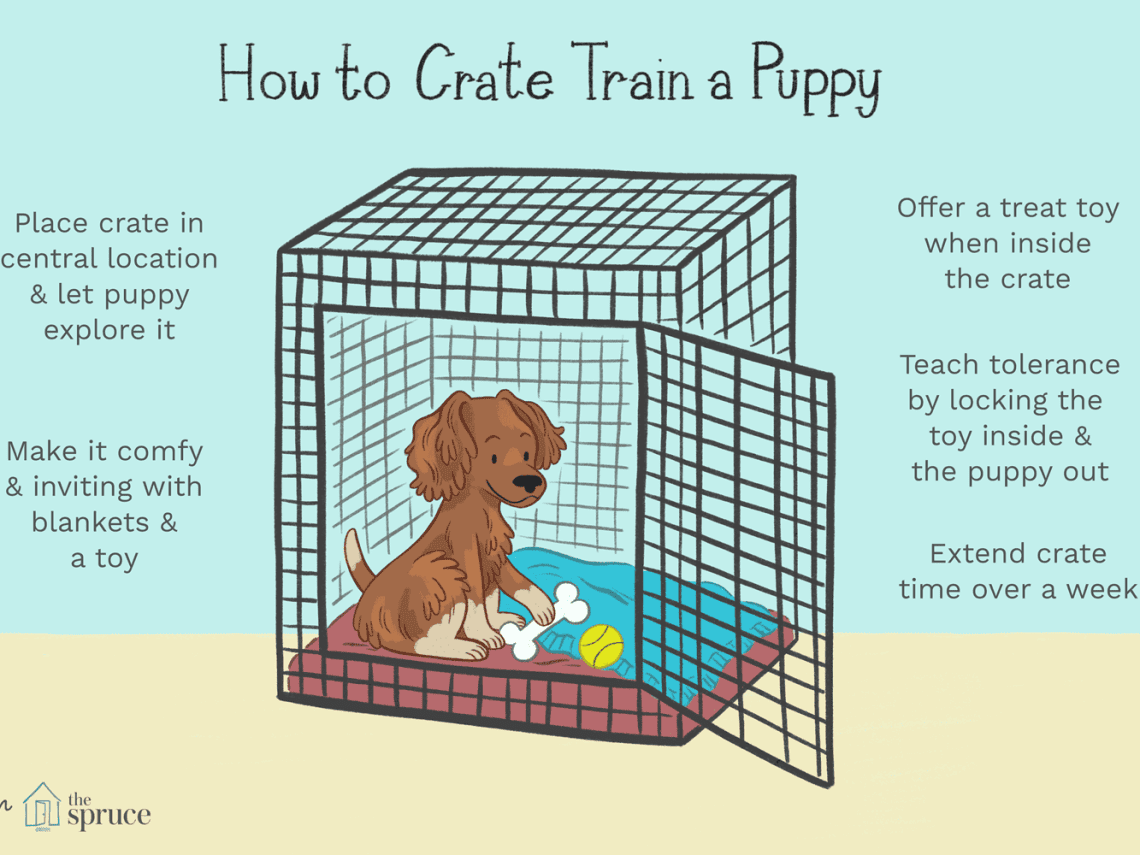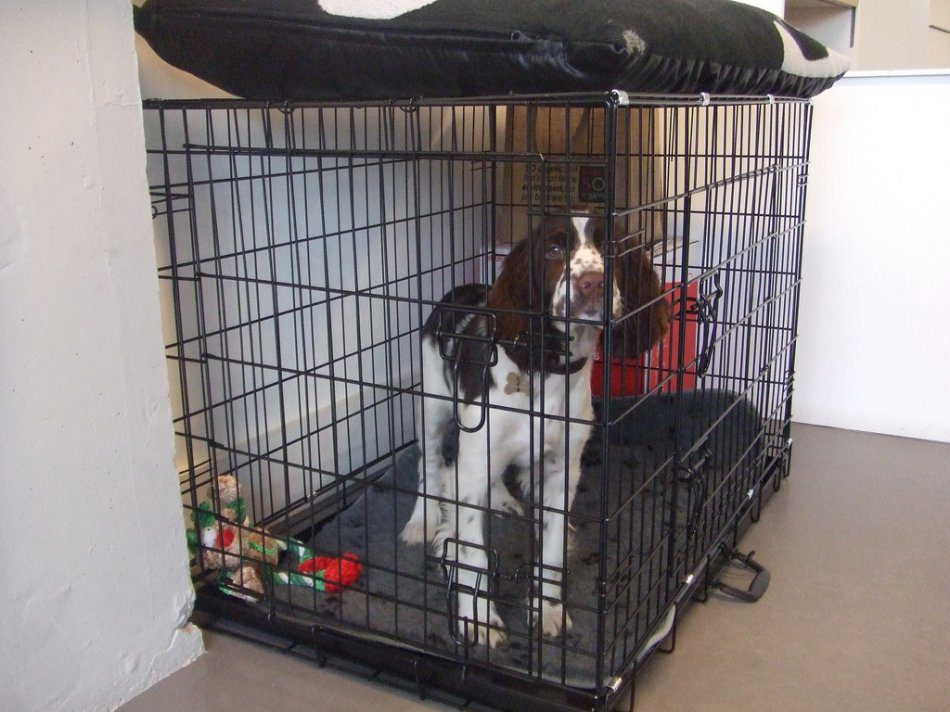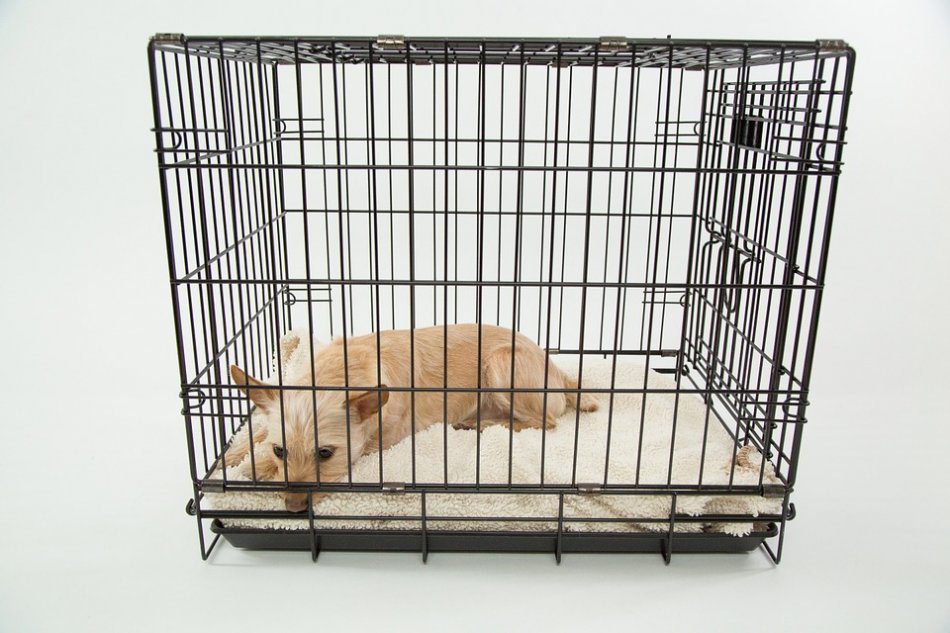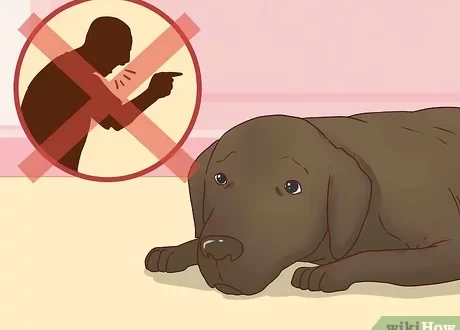
Cage for a dog: why is it needed and how to train it?
The dog cage is another stumbling block among dog owners. Some ardently advocate for the dog to spend time in a cage, others are categorically against it, considering it an attack on the foundations of a dog’s well-being. Is the cage so scary and does your dog need it?

In the photo: a dog in a cage. Photo: flickr
Why buy a dog crate?
A dog cage can be useful (or even indispensable) in a number of cases:
- You have an air flight and the dog is too big to fly in the cabin.
- You participate in events (such as competitions or shows), and it is more convenient for you and for the dog that part of the time he rests in a cage.
- You’ve run into dog behavior problems that are easier to solve by being able to occasionally put him in a crate.
However, buying a cage for a dog can be dangerous if the owner puts all hopes on raising the dog only on her. For example, if it seems to the owner that the cage will save his apartment from destruction, and the puppy spends most of the time in the cage. This negatively affects the psychological (and physical) well-being of the puppy: he is bored with spending a lot of time in the cage, he acquires bad habits (up to the development of stereotypy), and when you finally release the baby, he is overexcited. In addition, attempts to get out of the cage are fraught with injury.
So a dog cage is definitely not a panacea, and it does not relieve you of the need to educate and train your pet in the right behavior.
It is important to choose the right cell size. A dog in a cage should be able to get up, lie down in any position, turn around. At the same time, there should be room for toys and bowls of water. That is, the length of the cage in which the dog will be at home should be equal to the smallest length of the dog, multiplied by two. And the width is the length of the dog, multiplied by one and a half.
The dog should not spend more than four hours a day in the cage (in total).

In the photo: a dog in a cage. Photo: maxpixel
Don’t forget that you can’t just put a puppy in a crate and lock it up there. In order for a dog to behave calmly in a cage, it must be correctly accustomed to it. Cage training takes time, so if you have to move or participate in competitions, you should take care of accustoming your pet to a cage in advance.
If the dog is cage trained properly and not left too long, the dog perceives the cage as a safe haven in which to relax and stays there without trying to break free.
How to train a dog to a crate?
The dog is accustomed to the cage gradually. It is very important not to drive it into a corner and not keep it in a cage by force, otherwise you will only instill hatred for this subject and make a lot of problems.
The process of accustoming a dog to a crate takes time and patience.
- Take a treat and lure the puppy into the crate. When he is inside, praise and treat him, let him go right away. Lure with a treat again. So continue until the dog understands that a pleasant surprise awaits him inside. Another way is to teach the dog to touch a target (such as a sticker) with its nose on command, place the target on the opposite side of the cage from the entrance, and reward the dog for each run and nose touch of the target. If the dog is afraid to enter the cage, reward him for touching his nose, putting at least one paw inside, and so on. The worst thing you can do is force your pet into a crate.
- If the dog lingers inside the cage even for a second, immediately praise and give another piece of treat. And so on as long as she stays inside. Do not try to close the door at this time!
- When the dog can be in the cage with the door open for at least a few seconds, try closing the door, give the dog a treat, open the door immediately, and let the pet come out if he wants to.
- Try closing the door for three seconds and then open it. If the dog abruptly jumps out of the cage, it means that she is still afraid to stay inside. Return to the previous step.
- Close the door for five seconds, then ten. And all the while, feed the dog. It is very important to open the door before she gets nervous.
- Give a command to enter the cell (for example, “Place”) and to exit it.
- Give the command to the dog to enter the cage, close the door and take a step back. Come back, give the dog a treat and open the door. Gradually increase the number of steps you take. If the dog rushes out as soon as you open the door, then you are pushing the learning process too fast. It is worth going back to the previous stage. The dog must remain calm inside the cage even when you open the door.
- If your dog tries to get out of the cage, don’t panic. This means that you were in a hurry and greatly overestimated the requirements. Don’t let your dog out when he’s nervous. Instead, command “Down!” and as soon as she obeys, immediately encourage and let go. And go back to the previous step.
- Gradually increase the time your dog spends in the cage. But this does not mean that the stay in the cage all the time should be longer than the last time. From time to time, give the command to go into the cage, feed the dog and immediately let him out.
- If you open the crate and the dog stays inside, give him a large treat. She deserved it.





